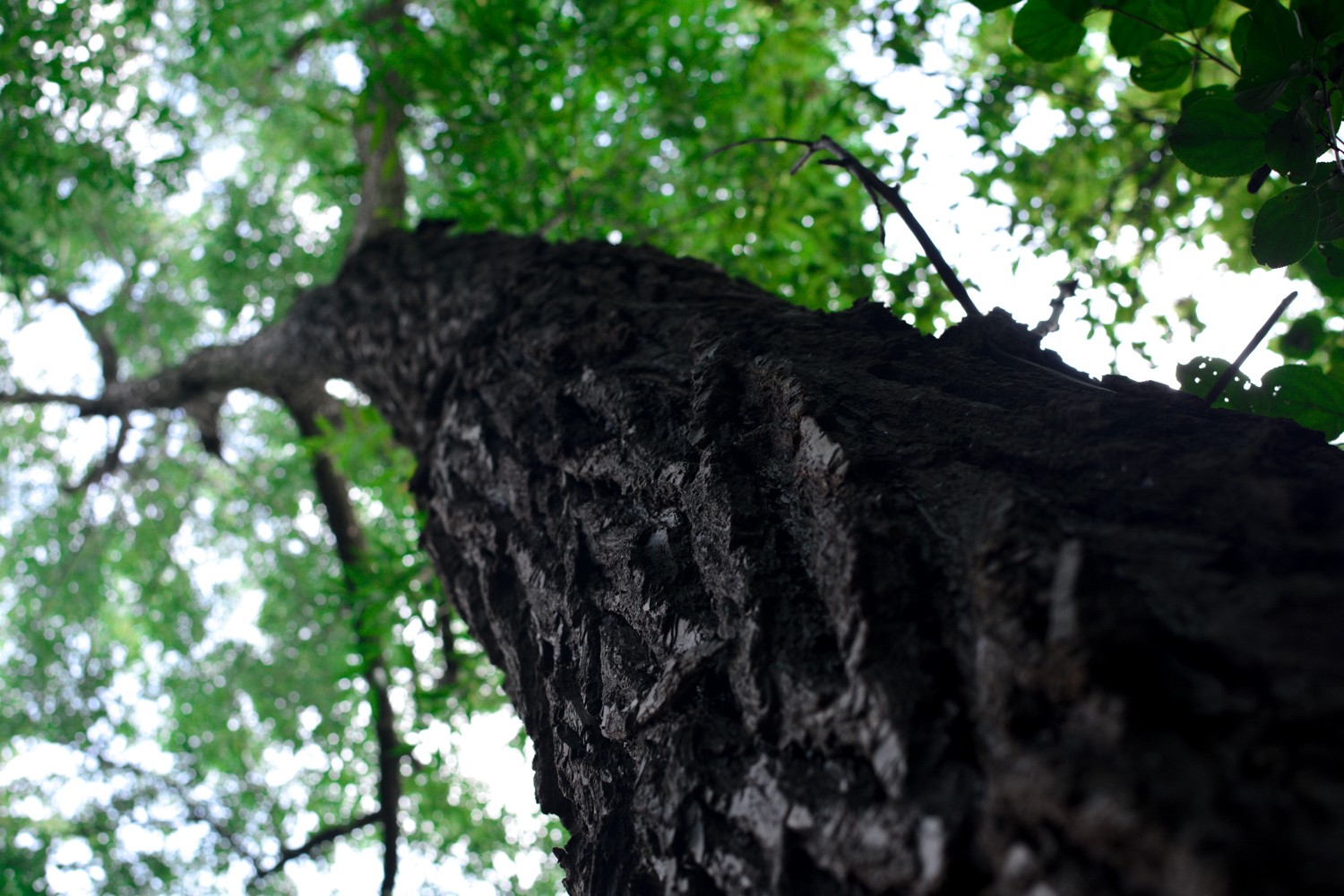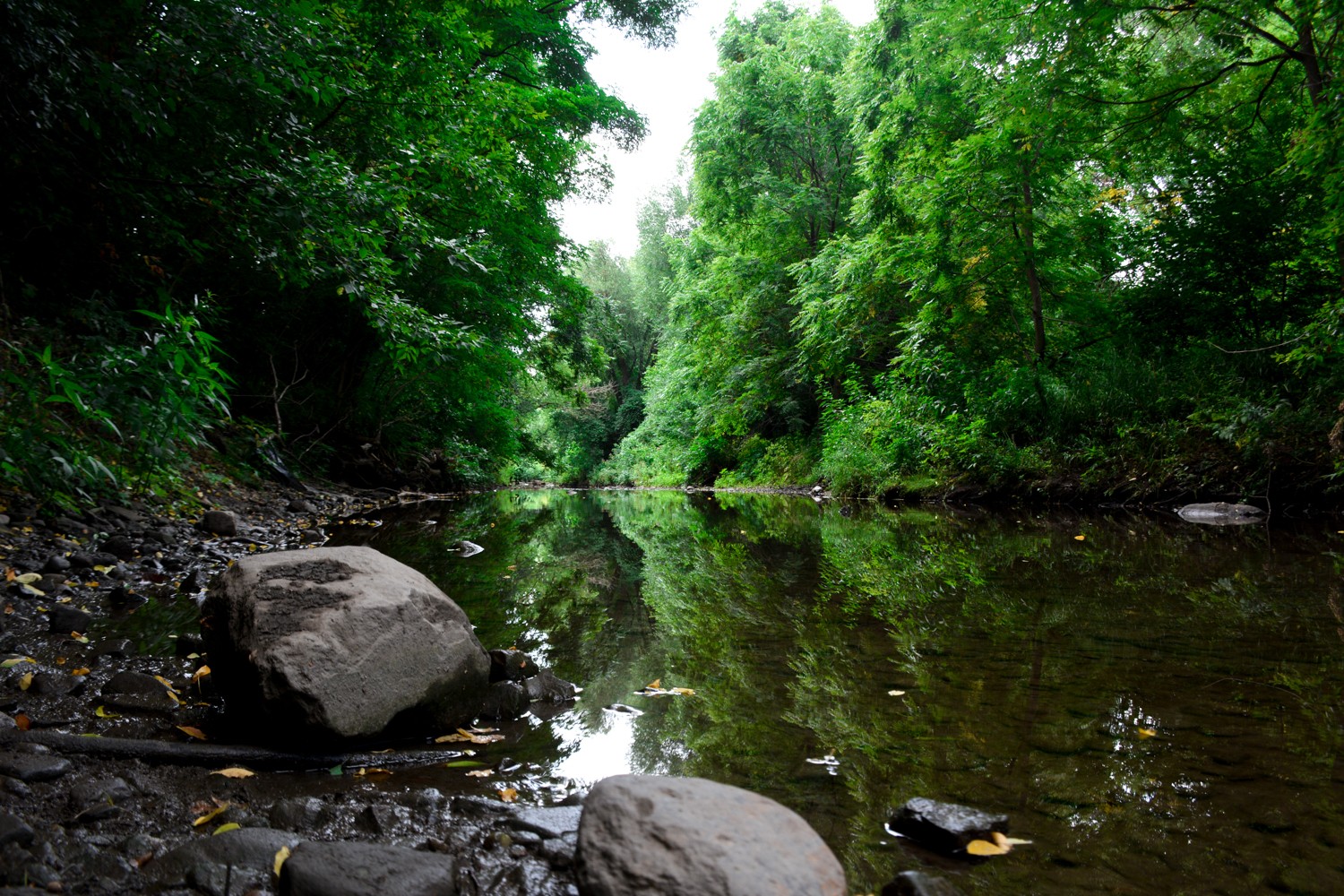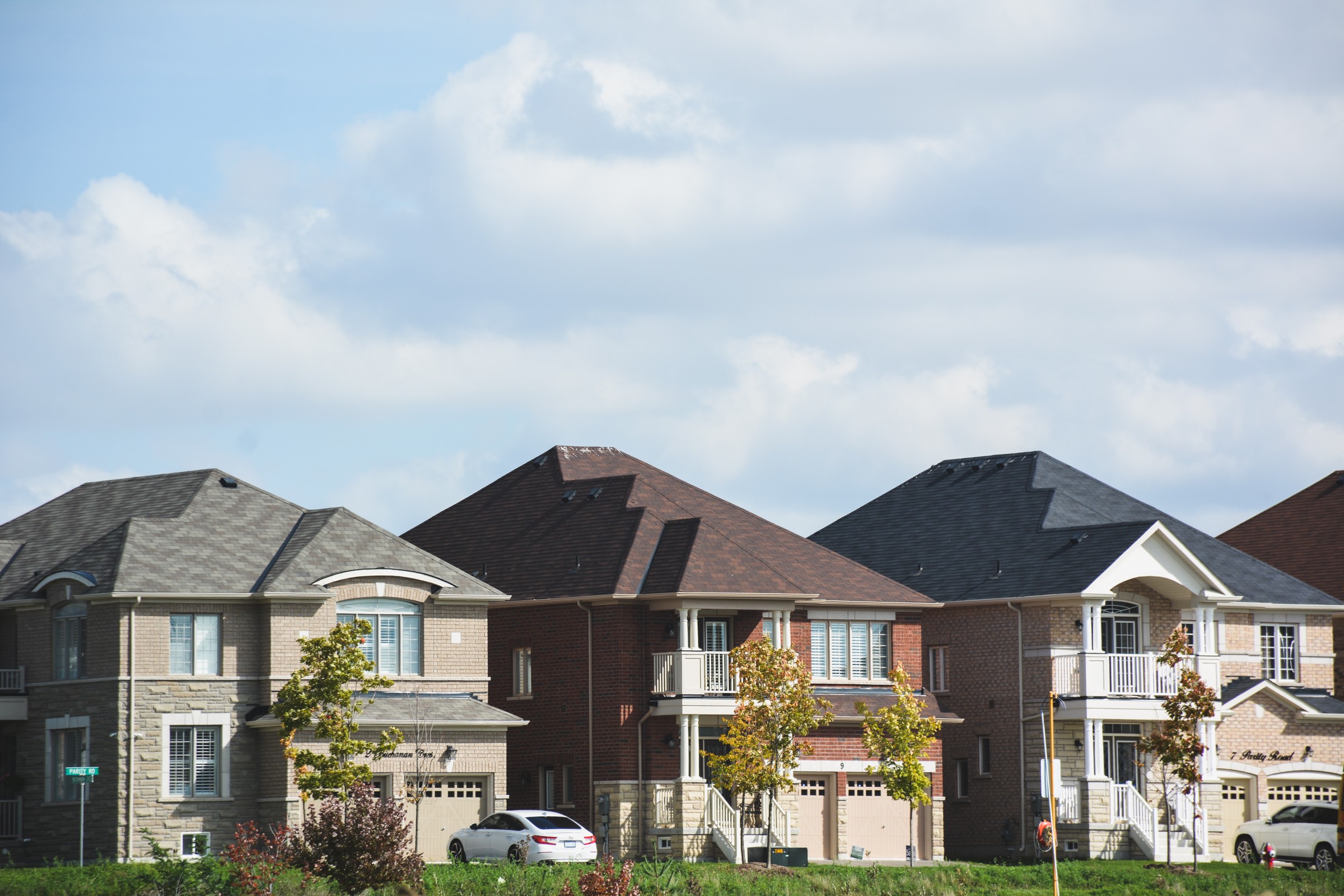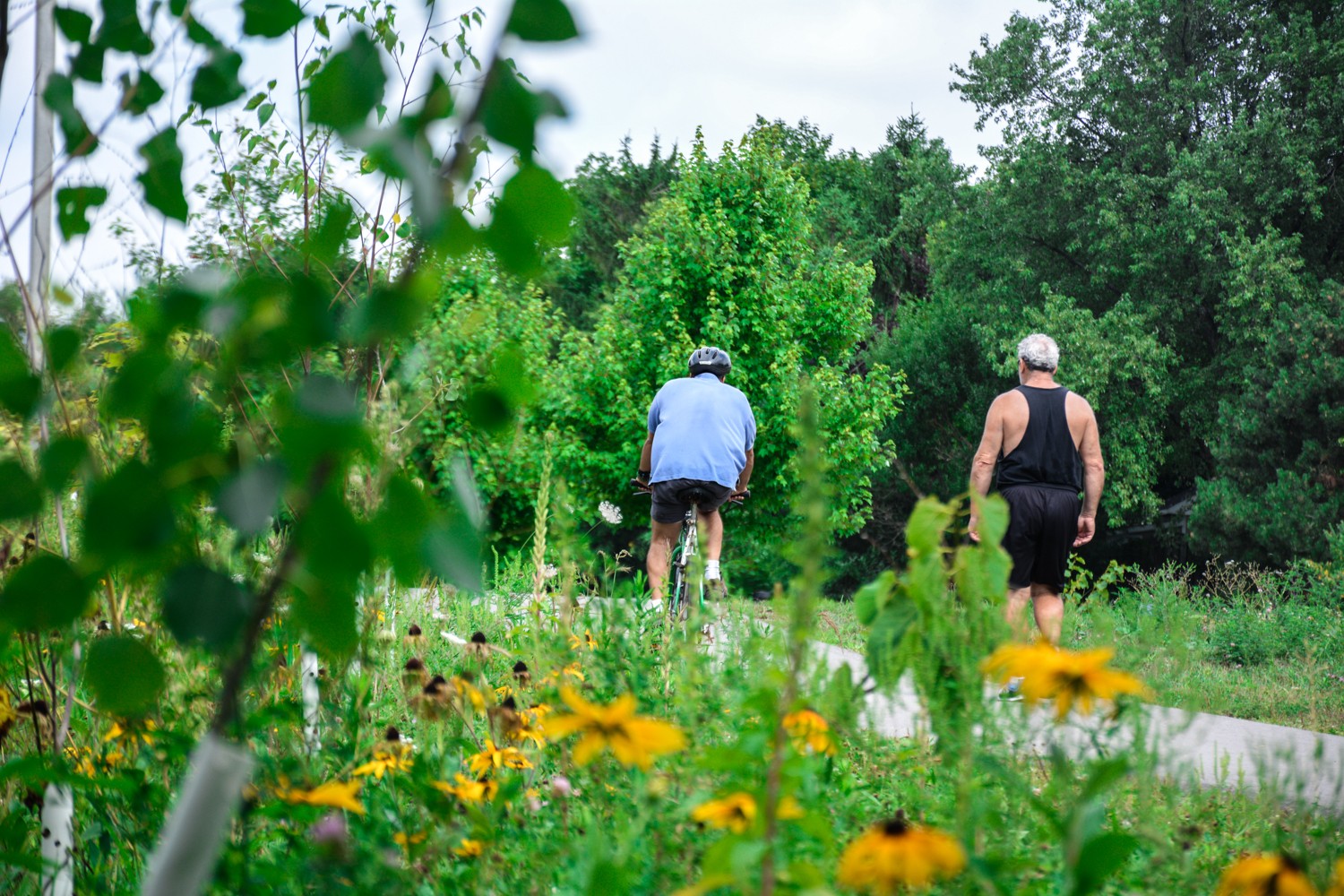
Greenbelt Foundation sets its sights on Peel’s lack of trees
It’s a grim feeling many know all too well; the muggy air, often filled with environmental pollutants, that makes it hard to breathe, engulfing us when the thermometer rises. While summer is a welcome break from our colder months, for many it arrives with a feeling of dread.
According to a report by The Region of Peel, by the 2050’s, extreme heat days will double from the numbers Peel is seeing now and temperatures will increase by an average of two degrees. By the time 2080 rings in, it will bring a temperature increase of five degrees, on average, compared to current levels. The changing climate and urban heat islands (UHI) are two factors contributing to these alarming numbers, and climate scientists warn the dramatic warming will come with wide scale devastation to our planet, including massive ocean-level rise that will wipe out entire coastal regions, severe droughts and food shortages and unprecedented loss of species.
UHIs are a major contributor to climate change and involve urban areas with large populations, heavy carbon footprints, constant human activity and not a lot of cleansing green space to counter all these factors, which are widely seen in Mississauga and Brampton.
Numerous research papers have outlined mitigating and adaptive methods that can be taken to reduce such threats, with one of the best, as highlighted by the region itself, being the planting of more trees in urban areas where few are found, like the downtown core.
Trees act as a cooling agent and capture emissions from the environment, helping reduce air pollution while dramatically cooling surface temperatures.

Planting more trees and fostering a natural heritage system in urban areas can have a collection of benefits for municipalities.
A collection of trees that form a canopy can dramatically reduce not only pollution and heat levels, but also the need for air conditioning in warmer months, which in turn limits the need for carbon-burning energy to run cooling units.
Mississauga and Brampton have been desperately trying to grow more canopies over the last decade, after seeing the impact of removal by residents and developers, the 2013 ice storm and the emerald ash borer infestation, an invasive species of beetle that feasts on ash trees, thousands of which have been destroyed across the region over the past ten years.
Another problem has been the rapid urbanization and residential growth seen in both cities, where row after row of new subdivision housing features wide paved roads, sprawling driveways for cars and no mature trees. New ones are planted, but it can take more than 30 years for them to form an effective canopy, while many new areas of both cities lack proper coverage from the few trees that are planted around homes. In warmer months, and with more extreme heat days becasue of climate change, the sun beats down directly on these houses, which can heat up like an oven without adequate protective tree coverage.

The rapid urbanization in Brampton and Mississauga has led to the widespread elimination of greenspace and trees in the two cities.
Both Mississauga and Brampton have initiatives to plant one million trees, with the goal of completing this by 2032 for Mississauga and 2040 in Brampton. So far, Mississauga has planted 380,657 trees since it initiated the plan.
In February, when Brampton’s plan was approved, council committed to planting 50,000 trees annually. Megan Ball, a spokesperson for the City of Brampton, said tree planting occurs in the spring (April through June) and fall (September through November). The tree planting season for spring has been cancelled this year because of the spread of the novel coronavirus. It’s not clear how the city plans on making up the lost time.
Ontario’s Greenbelt foundation is also stepping up to frame the importance of natural coverage in language that municipalities understand best: money. It’s using the framework to make a business case showing how the increase of tree planting can lead to health benefits, reduced health costs, more efficient buildings, less energy use, and the overall improvement of the environment. “We're trying to get municipalities to understand that they can actually put a dollar value next to their natural assets,” Michael Young, the organization’s communications advisor, told The Pointer. “They can delegate resources to them, but also save themselves money.”

Brampton plans to plant 1 million trees in the city by 2040.
Such a framework can assist cities like Brampton, which has a number of green strategies, but still sees the destruction of green space. The plan to widen Williams Parkway from four to six lanes to help ease congestion is an example. Even before a vote in November to hit the pause button until further studies are completed, residents had already voiced their concerns over the number of trees that would be cut down along the busy thoroughfare to make way for more cars.
Working with the Toronto and Region Conservation Authority, the foundation will examine how increasing an urban tree canopy in the neighbourhood of Mavis Road and Highway 407 in Brampton (which lacks proper tree coverage) would be beneficial. A 2013 site study of Mavis Road and Ray Lawson Blvd, an area near the one being studied by the Greenbelt Foundation, states there is little to no “natural area” in this specific part of the city which has been disturbed by construction and development through the years.
Further evidence can be found in real estate listings in the area; while many boast proximity to highways and major streets, hardly any mention natural features or accessibility to nearby greenspaces.
It’s a departure from the Flower City nickname and Brampton’s reputation prior to its explosive growth period that saw massive destruction of natural areas to make way for subdivision housing. It used to be known for its parks and other green features, and while those still exist, entire quadrants of the city have since been developed without proper tree coverage and other greenspaces.
“We know that greenspaces can impact physical and mental health in our communities,” Kathy Macpherson, vice president of research and policy for the Greenbelt Foundation said. “The results of this work will help decision-makers understand the specific health benefits that natural infrastructure like trees could provide in Peel Region.”
In a city such as Brampton, with high rates of obesity, diabetes, heart disease and respiratory problems, these underlying realities place stress on the local economy. More transportation options have to be provided for residents who are not mobile, a range of healthcare services has to be funded and under-employment due to chronic health issues creates a ripple effect on the local economy.
For those with respiratory problems, heart disease and/or diabetes, poor air quality dramatically increases risk, while living under a healthy tree canopy provides a layer of protection.

A healthy tree canopy in a city can contribute to improved physical and mental health for residents.
The Greenbelt Foundation is doing this work in support of EcoHealth Ontario, Young said. Their strategy will be used to help municipalities and conservation authorities make strong cases for investment in greenspaces as part of a broader investment in public health. EcoHealth Ontario represents professionals in public health, medicine, education, planning and environmental fields, aiming to increase the overall quality of life in communities where people live.
The research objective is to learn how trees can help fight against climate change by “reducing vulnerability to extreme heat.” Previous research has determined trees can make an area feel 11 degrees cooler, Young says, making Peel an ideal example to highlight the positive impact trees can have on the environment and health of a region. The research to show this is underway and will be published later this year. The foundation will also work with the Credit Valley Conservation authority, which has been working with Punjabi Community Health Services on how to get seniors more integrated with their natural surroundings.
Both of these projects arise from submissions put together by the Region of Peel, which has dealt with numerous examples of frustration and tension among residents over the lack of focus on environmental and ecological issues. The massive $6 billion Lakeview Village project, where almost twenty thousand new residents will settle along Mississauga’s eastern waterfront was originally conceived by local stakeholders with primary consideration of ecological living and environmental stewardship, but that hope was shattered after developers took over the planning.
In Brampton, concerned residents living near the Castlemore Golf and Country Club tearfully recalled the destruction of greenspace in their area earlier this year, after much of the natural surrounding was destroyed by developers to make way for planned projects.
While a cost-based analysis for Mississauga and Brampton is not available, one from the City of Toronto illustrates the impact the proposed framework could have. Research there shows a one percent increase in the city’s tree canopy (planting 102,000 trees, for less than $700,000) in 2019 would create health benefits of $1,642,800 a year.
Despite mentioning the One Million Tree Program in its budget, The Pointer was unable to locate a specific cost set out for tree planting in Brampton. In Mississauga’s 2020 capital budget, $577,000 is being set aside to plant new trees.
The framework found such investments can help in four different streams: physical health, mental health, environmental stressors (such as noise pollution and air pollution), and environmental changes due to climate change (such as flooding). Investing in greenspaces can lead to positive health outcomes such as the reduction of type 2 diabetes, depression, and cardiovascular disease. A 2018 report from Peel’s former top public health doctor, Jessica Hopkins, found one in six adults in the Region has diabetes and 62 percent of Peel’s population is obese or overweight.
The green initiative around trees states more research is needed to fully understand all the potential benefits for Peel Region.
Email: [email protected]
Twitter: @nida_zafar
Tel: 416-890-7643
Submit a correction about this story


